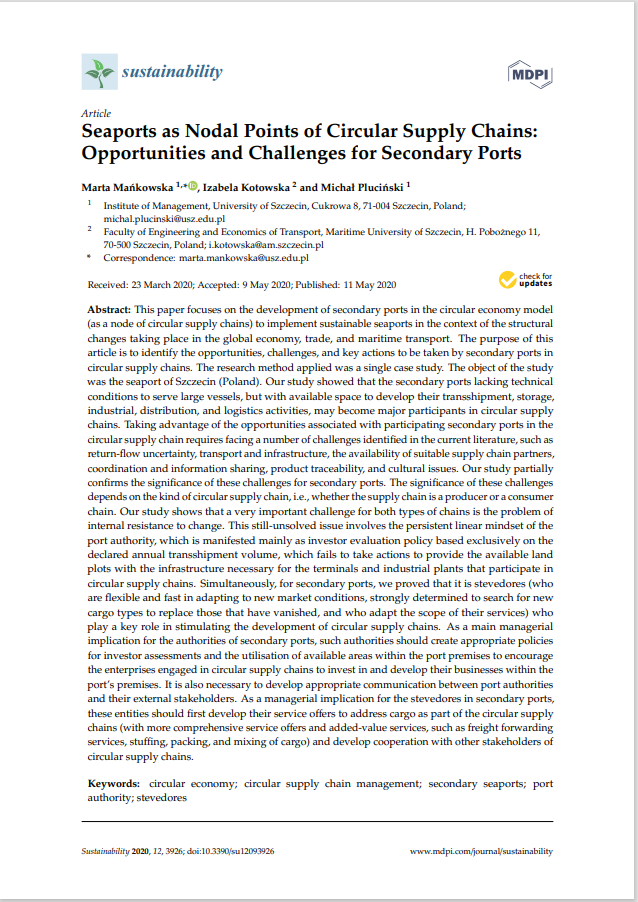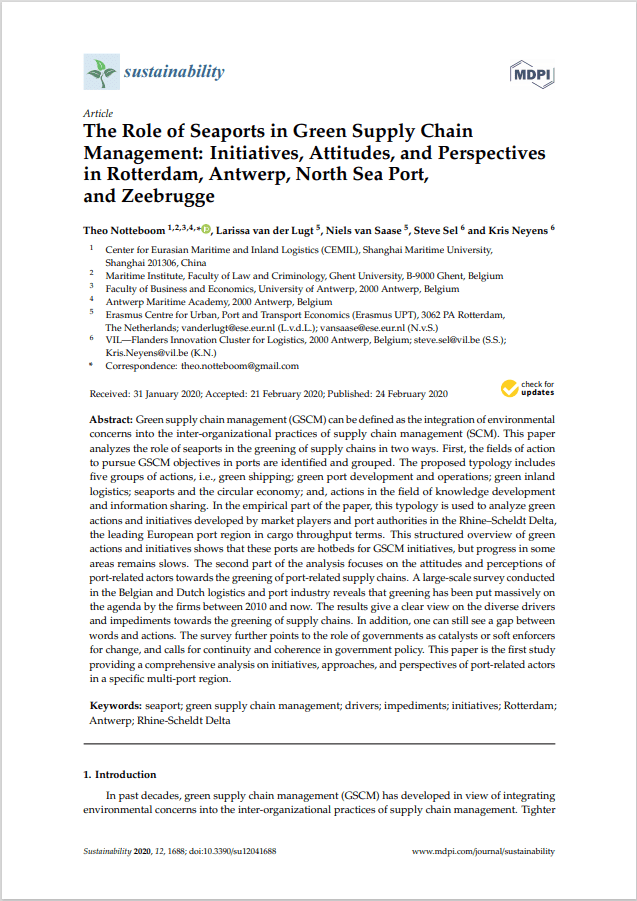Abstract
This paper focuses on the development of secondary ports in the circular economy model (as a node of circular supply chains) to implement sustainable seaports in the context of the structural changes taking place in the global economy, trade, and maritime transport. The purpose of this article is to identify the opportunities, challenges, and key actions to be taken by secondary ports in circular supply chains. The research method applied was a single case study. The object of the study was the seaport of Szczecin (Poland). Our study showed that the secondary ports lacking technical conditions to serve large vessels, but with available space to develop their transshipment, storage, industrial, distribution, and logistics activities, may become major participants in circular supply chains. Taking advantage of the opportunities associated with participating secondary ports in the circular supply chain requires facing a number of challenges identified in the current literature, such as return-flow uncertainty, transport and infrastructure, the availability of suitable supply chain partners, coordination and information sharing, product traceability, and cultural issues. Our study partially confirms the significance of these challenges for secondary ports. The significance of these challenges depends on the kind of circular supply chain, i.e., whether the supply chain is a producer or a consumer chain. Our study shows that a very important challenge for both types of chains is the problem of internal resistance to change. This still-unsolved issue involves the persistent linear mindset of the port authority, which is manifested mainly as investor evaluation policy based exclusively on the declared annual transshipment volume, which fails to take actions to provide the available land plots with the infrastructure necessary for the terminals and industrial plants that participate in circular supply chains. Simultaneously, for secondary ports, we proved that it is stevedores (who are flexible and fast in adapting to new market conditions, strongly determined to search for new cargo types to replace those that have vanished, and who adapt the scope of their services) who play a key role in stimulating the development of circular supply chains. As a main managerial implication for the authorities of secondary ports, such authorities should create appropriate policies for investor assessments and the utilisation of available areas within the port premises to encourage the enterprises engaged in circular supply chains to invest in and develop their businesses within the port’s premises. It is also necessary to develop appropriate communication between port authorities and their external stakeholders. As a managerial implication for the stevedores in secondary ports, these entities should first develop their service offers to address cargo as part of the circular supply chains (with more comprehensive service offers and added-value services, such as freight forwarding services, stuffing, packing, and mixing of cargo) and develop cooperation with other stakeholders of circular supply chains.
Keywords: circular economy, circular supply chain management, secondary seaports, port authority, stevedores
Re-sources
Related
Mapping the Supply Chain of Ship Recycling
Ship recycling refers to the process of dismantling vessels with the purpose of extracting and recovering materials for reuse, particularly…
Read moreThe Role of Seaports in Green Supply Chain Management
Green supply chain management (GSCM) can be defined as the integration of environmental concerns into the inter-organizational practices of supply…
Read moreThe future of port logistics: meeting the challenges of supply chain integration
The research is about the the future of port logistics and how to meet the demand for supply chain integration.…
Read more


